There’s practically no mediteranean garden – indeed not even a wild mediterranean landscape – without Euphorbias. I love the luminous bright green color and the pretty little flowers of wild Euphorbias appearing all over the place in February and March when there’s not much else. And I have grown to love the graphic look of Euphorbia in the garden. Euphorbias are also great feeders for many types of Hymenoptera and Diptera (broadly wasps and flies), promoting biodiversity. Bees aren’t really interested though.
They grow so easily here, and in such great variety (about 2’300 varietes worldwide!). All they need is well-drained and deep soil – whether in full sun or in partial shade, depends on the variety. Most varieties tolerate frost, heat, and drought, and do well in poor, gravelly, limestone or clay soil. As with most drought-tolerant plants they do not appreciate being watered excessively in winter.
Euphorbias mostly flower between the end of winter and the end of spring. The fruits dry out in summer and then let go of their seeds. Each stem has a lifespan of two years during which it grows, then flowers, and then dries out completely. After flowering the stems can be pruned back to keep the plant looking more decorative or to keep it from reseeding.
Euphorbias reseed themselves easily so can become a bit invasive. They have a reputation of not liking to be replanted but I’ve had no trouble at all re-settling Euphorbia Characias from one end of the garden to the other.
Handle with Care
I have no problem handling Euhorbias without gloves, but for some people contact with the latex sap can cause severe skin reactions. Therefore, if in doubt, wear gardening gloves – and do not ever touch your face or eyes (or any mucous membranes) after handling Euphorbias. The sap of some Euphorbias has been used in traditional medicine to treat skin cancers, tumors, and warts since ancient times.
My own collection is pretty small:
Euphorbia characias – Mediterranean Spurge
These were already in place and growing all over the parking area, so when we re-gravelled it in 2022, I replanted some of them in better spots and they all adapted very well. I really like their alien-looking flowerheads.
Euphorbia myrsinites – Creeping Spurge
This ground-covering Euphorbia resembles a very spiky octopus, lolling on the ground. It was planted in the spring of 2024, has come along wonderfully and has already reseeded in several quite distant spots in the garden. It blooms in April.
This plant does not take well to humid soil in summer. After we had some heavy rains in July it had completely died by the middle of August. Luckily by then it had already reseeded itself on a sunny bank a few meters away, where rainwater should be less of a problem.
Euphorbia dendroides – Tree Spurge
This Euphorbia was planted in the fall of 2023 and has grown so well, that I needed to prune and prop it up this spring to keep it from laying on its side. When it is fully grown it will be a large shrub of 1.5 by 1.5 meters. So far the expected orange coloring in May-June has not come about – it’s kind of yellow-green – but it does throw off its leaves in summer and makes new leaves starting in September.
Euphorbia cyparissias – Cypress Spurge
I planted the delicate looking ground-cover variety “Clarice Howard” in the spring of 2023 and replanted it in the fall in a better spot. It disappears over winter and comes back in spring, blooming shortly towards the end of April or beginning of May. In 2024 it stayed very small but this year it has begun to spread vigorously with its rhizomes and stolons and will take up a space of about 80 cm wide, when fully grown.
Euphorbia rigida
The latest addition in the fall of 2024. Okt 24 Senteurs du Quercy. So far it doesn’t look very “rigid” but lies on the ground. However it seems to be doing well and bloomed in February. I haven’t seen the fading flowers turn red yet but maybe I just need to be more patient.
For the moment I won’t be planting any other varieties of Euphorbia – except maybe a variegated green-and-white Euphorbia characias.
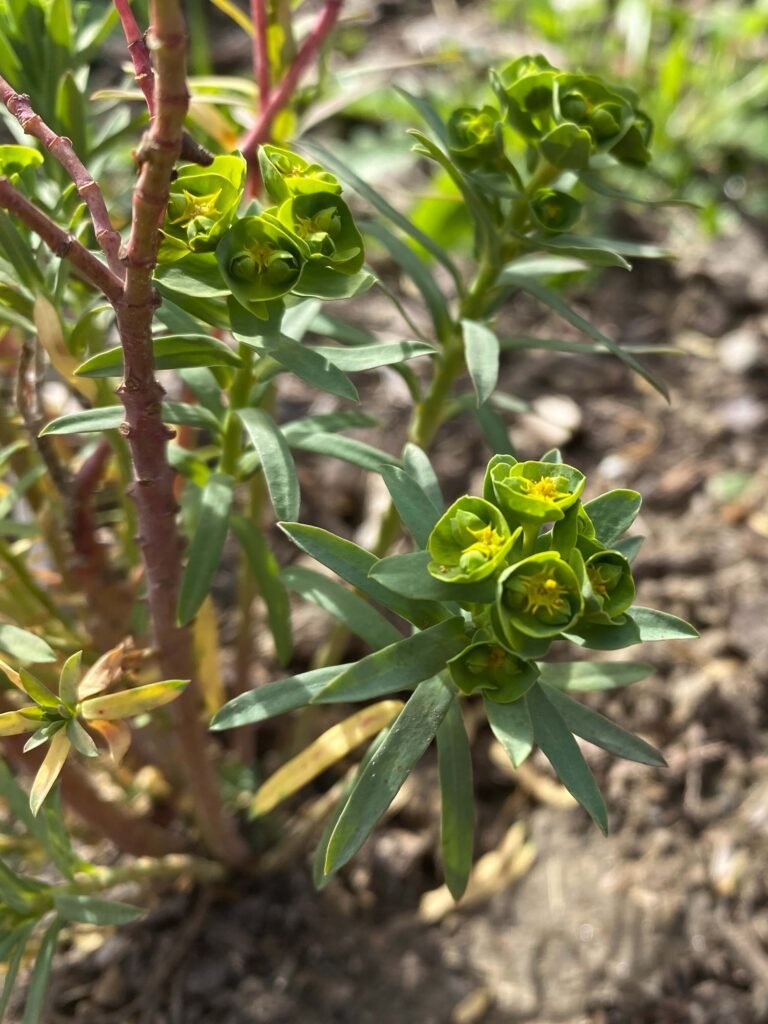
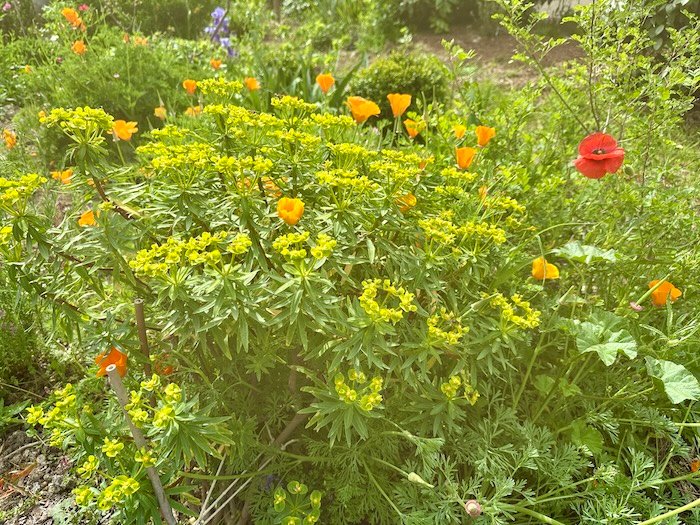
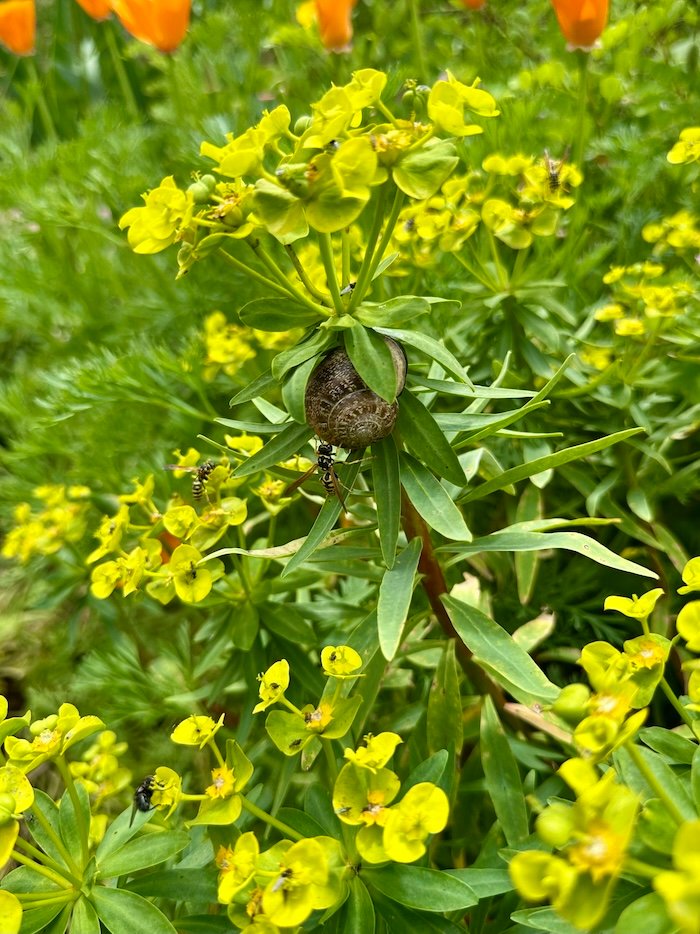
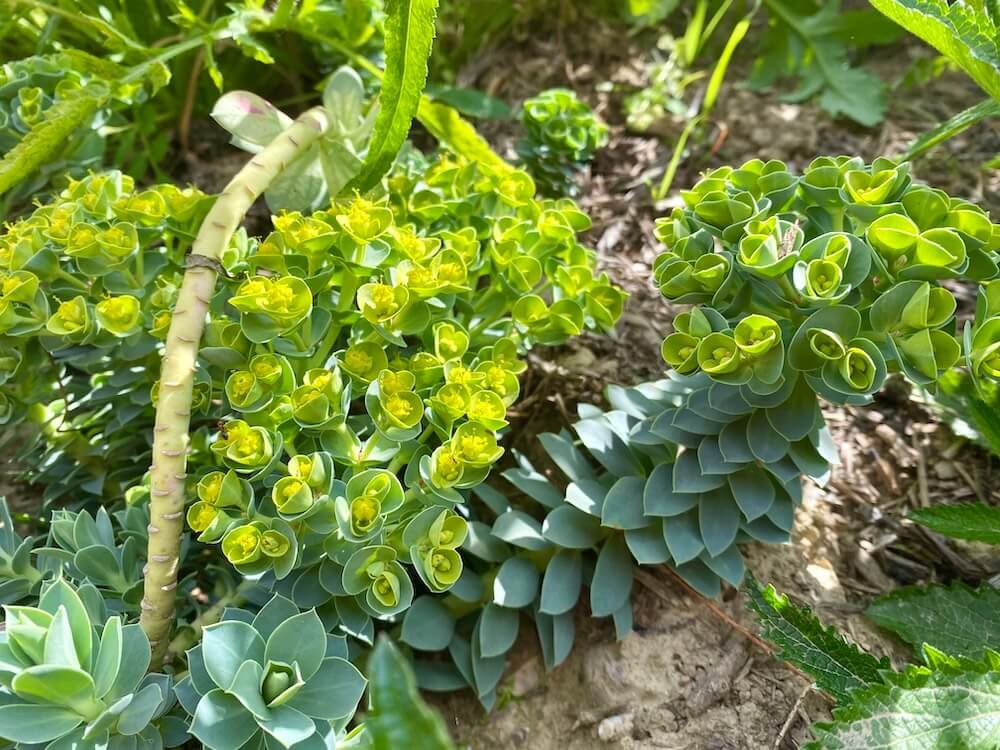
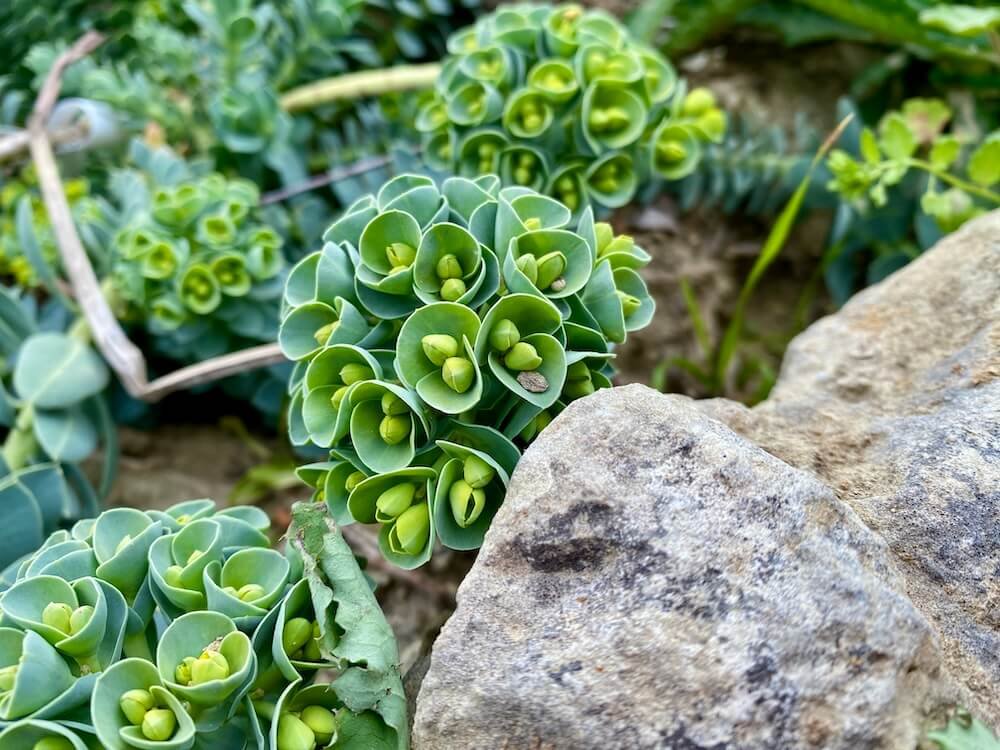
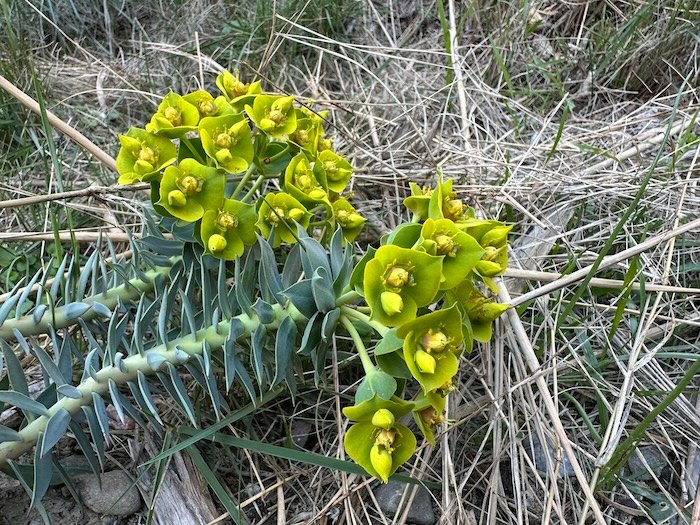
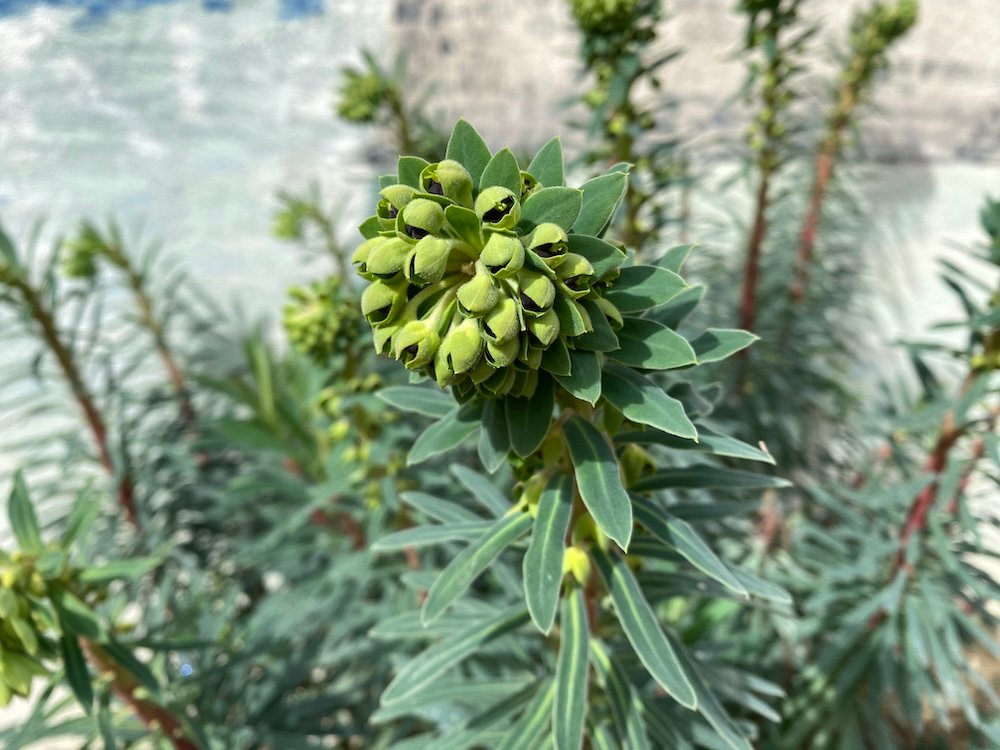


Leave a Reply